Buying a car will allow you to pay it off and not have a monthly payment again until you buy a new car. Leasing a car allows you to trade in your car every few years but you will always have a monthly payment.
What are the pro’s and cons in leasing a car?
Leasing Pros and Cons
- Advantages of a Car Lease. Fewer maintenance headaches. …
- Disadvantages of a Car Lease. Selling price is often full MSRP. …
- Watch Out for Mileage Limits! Most leases sent in by our visitors have a limit of 12000 miles/year, but I am seeing too many leases with ridiculously low 10,000 …
- You Should Not Lease If. You plan to move out of state. …
What are the advantages and disadvantages of leasing a vehicle?
The advantages of leasing, in terms of cost, include lower payments for a short period of time. Car payments when purchasing a car are often higher than lease payments and the loan may cover more years. Disadvantages with leasing a car include paying additional fees when you return the vehicle, and losing the car once your payments are completed.
What is the true cost of leasing a car?
Average cost of a car lease. The average lease payment for a new vehicle is just over $450 per month for a three-year lease, according to Experian’s Q1 2019 State of the Automotive Finance Market report.
Weighing the advantages and disadvantages of leasing vs. buying
Advantages to leasing include:
- Lower monthly payments
- The ability to drive a better (and perhaps newer) make and model
- Likely no down payment required
- The potential to trade in every two to three years
- Lower maintenance costs
- Paying a lower sales tax than when
- Possible tax deductions for business owners
Advantages to buying include:
- Long-term savings
- No mileage restrictions or overage charges
- The freedom to sell your car anytime you want
- The freedom to make after-market modifications to the vehicle
- The likelihood of building equity over the life of the loan
- No monthly payments after the car is paid off
Disadvantages to leasing include:
- Mileage restrictions and charges for overages
- Potential “wear and tear” charges at the end of the lease
- Ongoing payments while in possession of the car
- Nothing to show for your payments at the end of the lease term
Disadvantages to buying include:
- Likely a down payment required
- Higher monthly payments
- Often purchasing a less desirable make and model
- Depreciation can make selling the car difficult
- Out-of-pocket repair costs once your warranty expires
- The extra work of selling the car when you’re ready to buy a new one
Budgeting for your monthly car payment and expenses
After weighing the pros and cons, take some time calculating how much you can afford to spend on your car payment each month. The general rule of thumb is to spend no more than 20 percent of your monthly net income on a car.
Note that this amount includes all car-related expenses, including insurance and estimated repair costs.
For instance, if your monthly take-home pay is $5,000, your maximum car-related expenses should be no more than $1,000 per month. Log your income and track your expenses in a budget template to figure out how much you can afford to spend.
Also, consider how much you have for a down payment and if you’ll be trading in a vehicle. Both will reduce your monthly payment by lowering the amount you’ll need to finance.
You might be able to eliminate car expenses by using public transportation or even a rideshare arrangement. Compare the costs to buy a car vs. rideshare to see what makes the most sense for you.
FROM THE PERSPECTIVE OF KEEPING OUT F DEBT-MOST PEOPLE OR FAMILIES THAT HAVE DEBT PROBLEMS ALSO HAVE CARS THAT ARE VERY EXPENSIVE WITH BOTH PAYMENTS AND REPAIRS. REMEMBER THESE ARE DEPRECIATIING ASSETS THAT DO NOT BUILD OR HOLD VALUE FOR YOU.
I cannot tell you how many people are in debt cause of this and also cannot get a home purchased because their debt ratios are far too high from their car payments. People tend to want (not need) the next best thing-newer, more expensive, all the bells & whistles, warranty, etc. then they wind up paying to much money every month and for many years. A quick example is a person I know in their 20’s who just bought a $19,000 car with over 330 a month payments for seven years. Think about that-if they had gone out instead and bought a decent used car, maybe a Honda or Toyota for maybe 3 to 5k cash, they would have zero payments and would not own a depreciating asset and would have that extra 330 a month over 7 years to pay off debt or other things. This is the formula to follow when in debt or not having much cash. When you have no debt, have strong income and money in the bank or big emergency funds, then you can get whatever you want and even pay cash for it.

